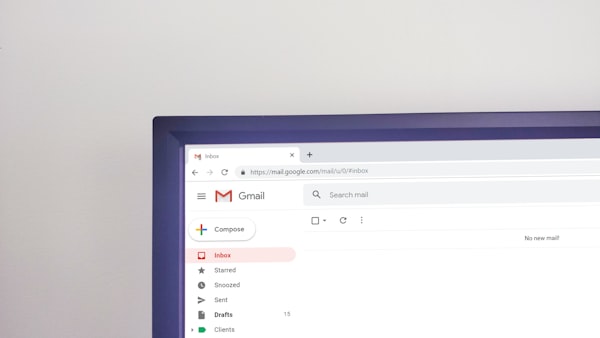Salespeople are salespeople for a reason and while you don’t want to teach someone how to suck eggs, concocting a sales script is a skill - and not one everyone has.
Personally, I’ve come across some absolute shockers. I’m talking glaringly obvious typos. 10-line long paragraphs. Part Comic Sans, part Arial. Part black, part blue. Part size 11, part 14. Part bold, part italic. I’d love to tell you I’m exaggerating, but I’m not.
Unfortunately, I don’t have my hands on them anymore but here are some equally questionable examples I found online:
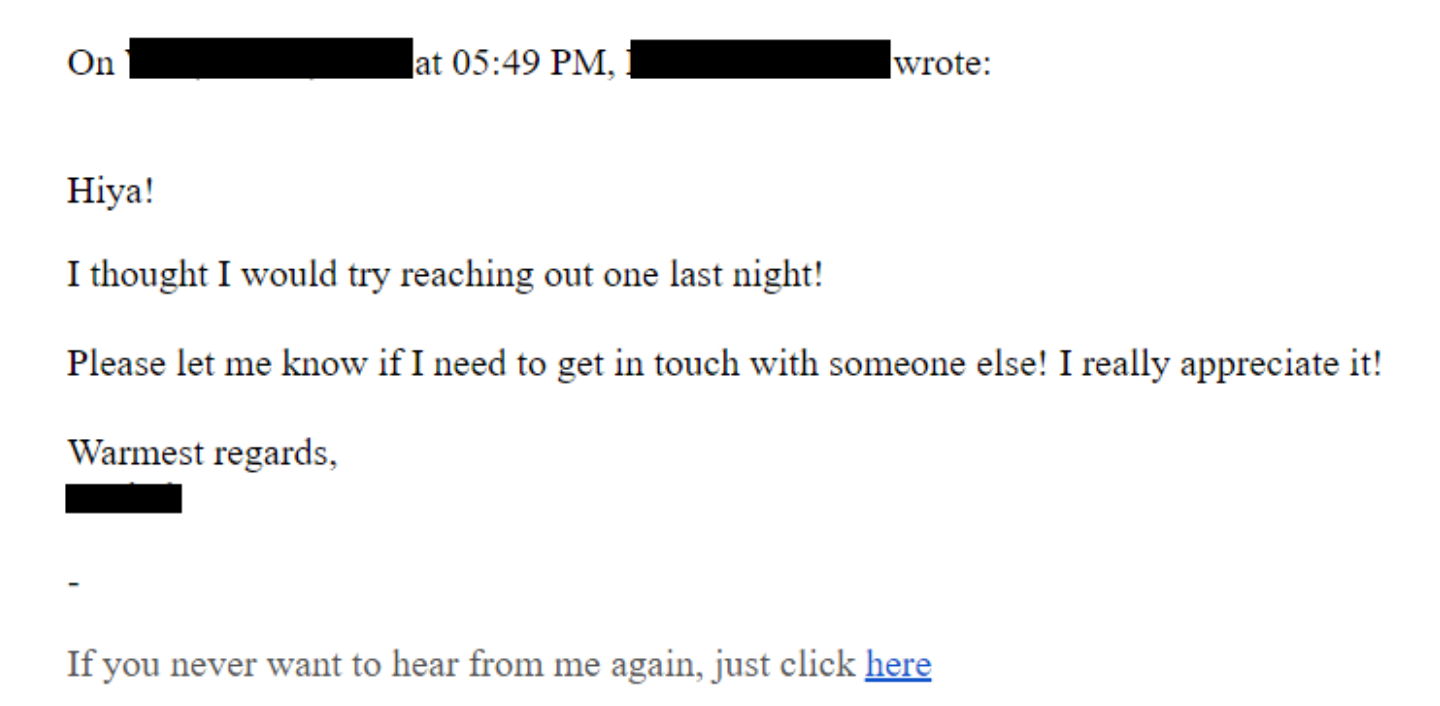
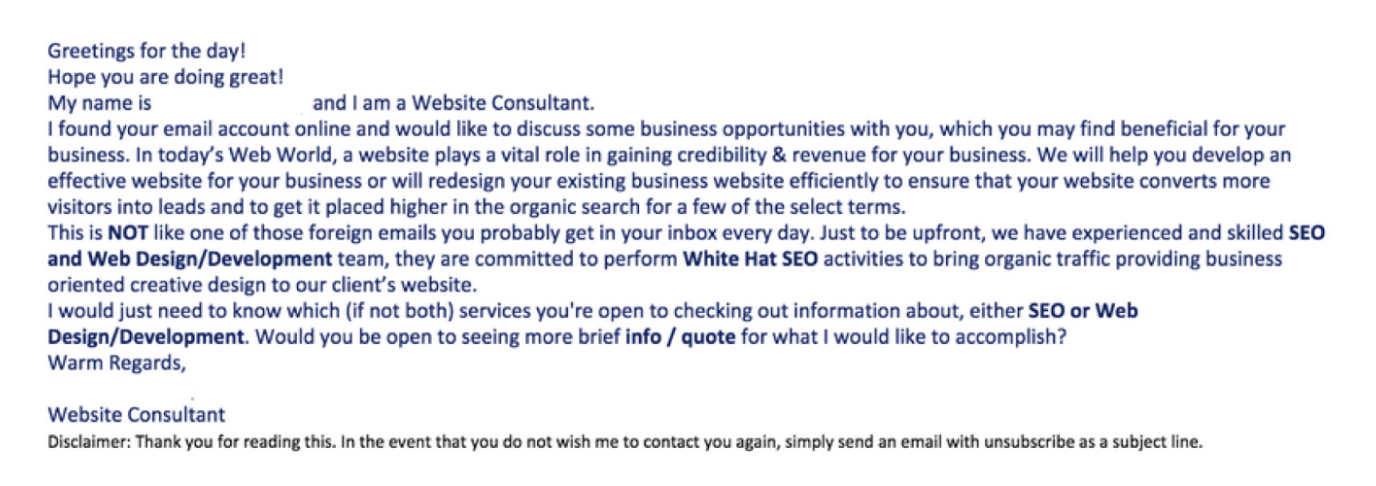
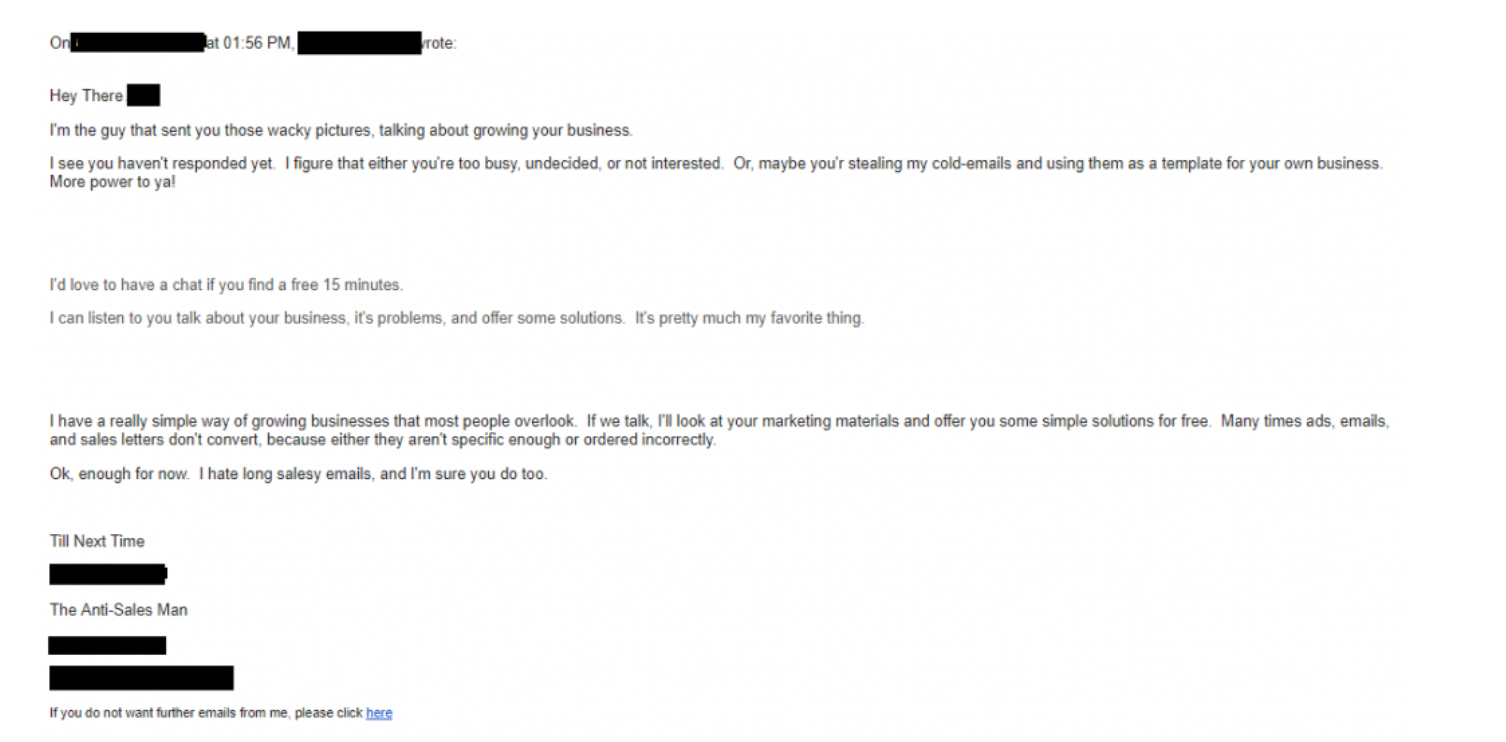
The problem? It speaks for itself, surely. They look unprofessional, they lack credibility, and they lose sales, and what’s the point in all your hard thought-out value propositions, crafted messaging and multi-touch nurture campaigns if the rug’s being pulled from your feet moments before the final hurdle?
For the purpose of this blog, I’ll not be focusing on your typical marketing emails. I mean the ones your reps press send on after they’ve been on the phone to a prospect. The follow-ups, the “it was great chatting to you”, the “I thought you might find this useful” type. They’re the often unreviewed ones that can slip through the net and hurt everyone’s numbers.
How to get buy-in
Now, in case anyone’s reading this thinking “I’d love to step in and have some say in our sales reps’ emails, but hell will freeze over before they let me”, here are a few tips on how to get that door ajar.
1. Start at the top
If you don’t get team leads or managers on board, odds are, you’ll struggle to get everyone else to follow suit. So, set up a meeting, explain the reasoning behind the changes and go in with a benefits-led approach. Quality emails will inevitably get more sales, that means their teams do better, they look better, and the business performs better. Who’s gonna turn their back on that?
And if they’re worried their teams aren’t going to go for it, arm them with residual benefits too, like:
- Better emails = more wins = more bonuses
- Email scripts = less time typing = more time prospecting
- Readymade templates = easier tasks = happier teams.
Lastly, to make sure the changes are lasting, think about asking them to spot check their reps’ emails from time-to-time. This doesn’t have to be positioned as a ‘we’re snooping on you exercise’, but as a ‘we want to continue learning and see what’s working’ initiative.
2. Get them involved
If you bring people into the process they’re more likely to be on your side and besides, your reps will be able to support you with lots of frontline intel. So, put together a bit of a focus group of salespeople and pick their brains on:
- What types of templates would be useful
- What they think currently works
- What they think needs improving
- Their pain points when it comes to crafting emails
- External examples they like.
All of this will help you rustle up a series of templates that are a) relevant, and b) likely to be well-received.
3. Prove it
Pick a few salespeople who you think will be receptive, give them some templates you’ve put together and ask them to feedback on the results. For example, do they get more replies with the new templates? Is the net result more conversions? Or higher value sales?
Anything tangible like this will help overall adoption of your templates, because what sales rep doesn’t want to meet or smash their targets?
The all-important how
As with any type of marketing, there are a few staple ingredients to every successful sales email:
1. They’re short and sweet. Whether you’re B2B or B2C, the person on the receiving end’s going to be busy and the last thing they want is to see an 800-word email. Odds are, if they open up a wall of text the first thing they’re going to do is click right back out.
2. They reflect your tone of voice. Let’s say your tone of voice is super chatty and informal. That kind of language is splattered across your website, social channels, nurture content, the lot. The prospect has a conversation with the rep who sounds like a human over the phone...and then they receive an email that looks like it was part of a thesis.
Consistency is key. At every single stage of the journey.
3. They’re clear. Make sure your reps make their point early on as too much leading waffle can dilute the actual action you want readers to take. That doesn’t mean they can’t open with a couple of niceties like “hope you’re well”, “hope you’re having a good start to the week” or “it was great chatting to you yesterday”, but don’t let those pleasantries go on for lines upon lines.
4. They don’t toot their own horn. It might seem counterintuitive, but raving about how awesome you are isn’t necessarily what’ll tip prospects over the line. Instead, they want to know how your awesomeness is going to help them.
One of the best ways to show, not tell, this is by bringing a case study into play and letting already happy clients do the boasting for you. Usually, people will trust the words of others more, too.
5. They add value. Every email’s an opportunity to demonstrate your expertise, authority and value, and this is where content marries up with your sales reps’ contact. For example, which adds more out of these two:
Example 1:
“It was lovely chatting earlier and it’s great you’re ready to book a demo of our product. As promised, here’s the link to book your slot.”
Example 2:
“It was lovely chatting earlier and it’s great you’re ready to book a demo of our product. As promised, here’s the link to book your slot.
“In the meantime, here’s a useful video of common Q&As people in your position often ask. And if you’ve thought of something that’s not already on there, do get in touch any time.”
6. They’re structured well. For starters, make sure the font, size and colour are consistent. Basic, we know, but apparently it’s not obvious for everyone. And secondly, break it down into digestible chunks. Three, two-line bullet points look more inviting than one, six-line-long paragraph, for example, so see how and where there are opportunities to simplify the layout.
7. They’re personal. That includes their name, of course, but also:
- Some specifics about their contact with you. For example, say the rep had a phone call and uncovered the prospect’s challenge was to do with getting buy-in from higher up. The follow-up email could include something like “I know you mentioned your struggles around buy-in, so I just thought I’d share this guide about the specific use cases for product X and the return other companies saw.”
- First and second person throughout. When you’re talking about the rep, say “I” not “the company” and when you’re referring to the prospect, use “you”.
8. They’re customisable. As we just mentioned, every prospect is different making it almost impossible to create a template for every single scenario, so, make sure your reps know there’s scope to tweak them to fit each case. If they start thinking they’re gospel, you’ll end up with people shoehorning a template to fit a situation and that’s not going to get the results you’re after, either.
9. They’re credible. Okay, so this one’s not strictly to do with the body of the email itself, but don’t forget about people’s email signatures - they add to the overall credibility. For example, which elicits more trust and professionalism, this:

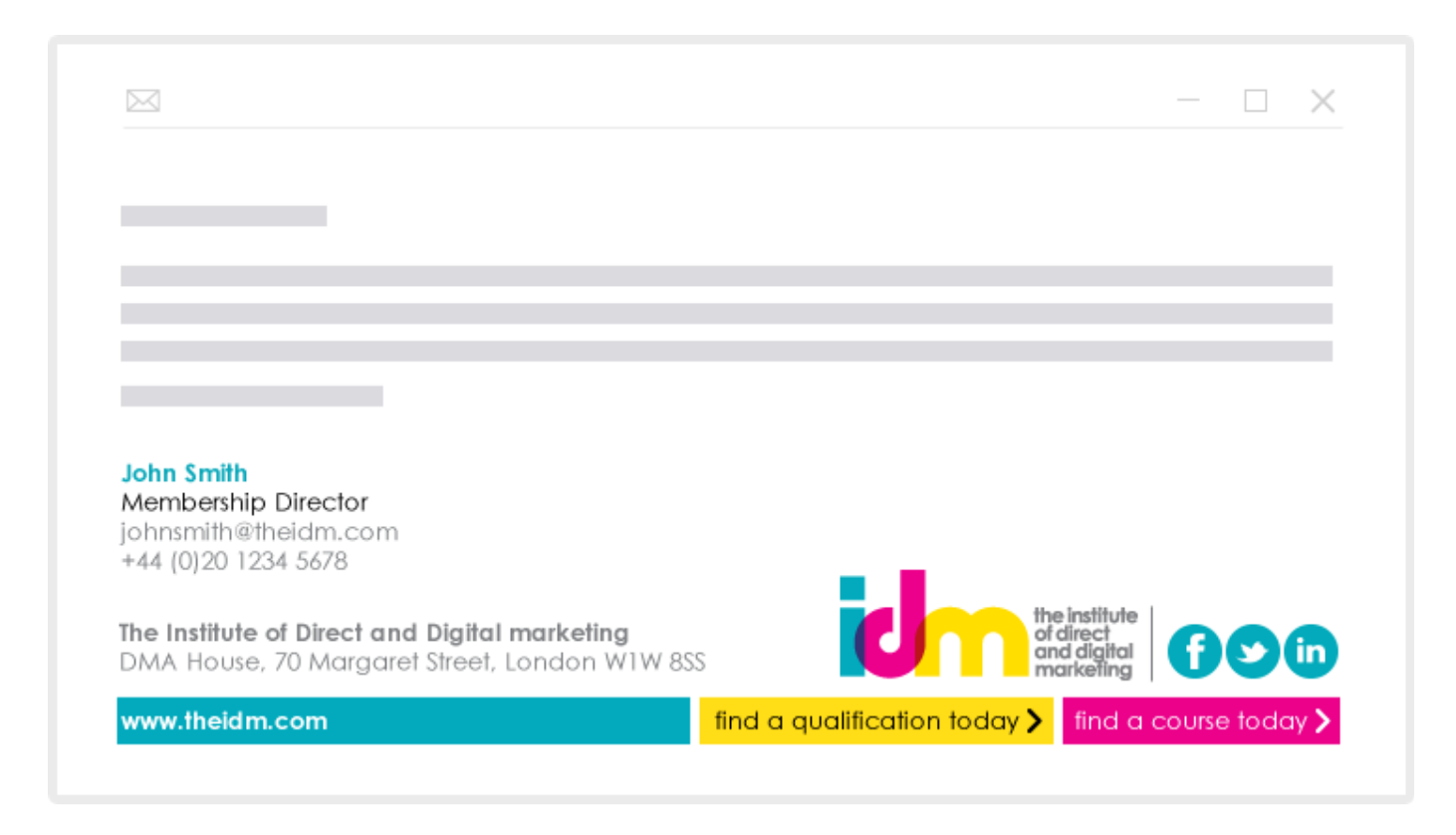
9 templates to get you going
These aren’t prescriptive but hopefully, they’ll give you and/or your salespeople something to work with.
(For these examples we’ll be positioning our emails from a social media agency to startups - tweak the product talk and they can be all yours too, though).
1. Cold pitches
There are a few ways you can make cold pitches less...cold. Like latching onto a recent promotion, complimenting their work or offering help.
Congratulate a recent promotion
Hey Jane,
Congratulations on your recent promotion to Marketing Manager!
On the off chance you and your team need a little support with the social side of things, I just thought I’d put our name on your radar.
You can learn a bit more about us and our work here.
Congrats again and best of luck with the new role!
Thanks,
John
Compliment their work
Hey Jane,
I just stumbled across your LinkedIn article on ‘The future of Facebook’ and wanted to reach out and say fab job!
It was a really great read and I couldn’t agree more with everything you said - especially the bit about the benefits of closed groups.
We’re all about staying ahead of the trend here at The Social Co. so it’s always interesting to hear other people’s perspectives.
Looking forward to seeing what else you come up with!
Thanks,
John
Offer help
Hey Jane,
I couldn’t help but notice [insert their company’s name]’s Twitter feed’s looking a little bare and I was wondering if this is something you needed a bit of support with?
A whopping 94% of Twitter users plan to purchase something from a business they follow, so it could be a really great opportunity for you.
If I’ve piqued your interest, it’d be great to chat. The ball’s in your court and you can book a time that suits you here.
Thanks,
John
2. Post call reminder
If the outcome of the call was a booked demo or consultation, get it written down and use the email as an outlet to add a bit of tangible value they can cling onto.
Hi Jane,
It was great chatting to you just now.
As discussed, your free phone consultation’s on December 5th at 9.30am. I’ve popped a calendar invite over too and it’ll automatically remind you an hour before.
In the meantime, I just thought I’d share this video with you on ‘How to monetise your Instagram profile’. Our social experts put it together and it might give you a few bits of food for thought ahead of your call.
Have a great day,
John
3. Post call leave behind
If the call ended with the prospect still unsure, dropping them an email with an overview of what you spoke about - plus something a little extra - is a great way to keep you fresh in their mind and them something to refer back to while they’re mulling your product over.
Hi Jane,
Thanks again for your time earlier.
As promised, attached’s an overview of what we spoke about over the phone. I didn’t want to bombard you with too many files, but if there’s anything else you’d like just lemme know and I’ll send it over.
Seeing as I’m in your inbox anyway, I guess it’d be rude not to point you to a couple of our recent case studies here and here.
I’m around anytime on the number below if you’ve got any questions.
Chat soon,
John
4. Random drop-in
Don’t want to slip to the back of someone’s mind? Then find a random reason to touch base - and remember, providing they haven’t already seen it and you’ve not got a date stamp on the content, it doesn’t actually have to have been recently published.
Hi John,
We just published this podcast on ‘The state of social media in the real estate industry’ and you came to mind after our chat last week.
Anyway, I just thought I’d ping it over in case you fancied a listen. If you get a chance to tune in, we’d love to know what you think!
Speak soon,
John
5. Follow up
Whether the call ended with the prospect saying they were unsure or ready to book a consultation, a follow-up a week later’s the perfect opportunity to a) see if they’ve made up their mind, or b) give them a prod to take the next step (if they haven’t already).
Still on the fence?
Hi Jane,
Hope you’re keeping well.
I’m just checking in to see if you’ve thought any more about the solutions we discussed in our call last week?
If you have and you’re ready to book your consultation, head here to find a time and date that works for you.
And if you’re still unsure, that’s not a problem at all. I’ll give you a bit more thinking space. Between now and then though, you can find lots of tips on how to keep your social channels ticking over on our blog.
Thanks,
John
Action not complete
Hey Jane,
How’re things?
I noticed you haven’t booked your social consultation since we last spoke so I just thought I’d ping an email over to see where things are at?
If it’s easier, feel free to give me a call and I can book it in for you.
Cheers,
John
No shows
Hey Jane,
Hope everything’s okay?
I saw you weren’t able to make the consultation you had in the diary and I just wanted to check-in to see if it’s something you’re still interested in?
If you want to book a new slot you can do it yourself here, or give me a call and I’ll happily take care of it for you.
Let me know if there’s anything else I can help with.
Thanks,
John
What’s your approach and stance to salespeople’s emails?
Do you, or do you want to, have a say?
Do you think it should stay within sales only?
And if you’ve got any cracking examples of blooper emails, we’d love to see them!


 Follow us on LinkedIn
Follow us on LinkedIn